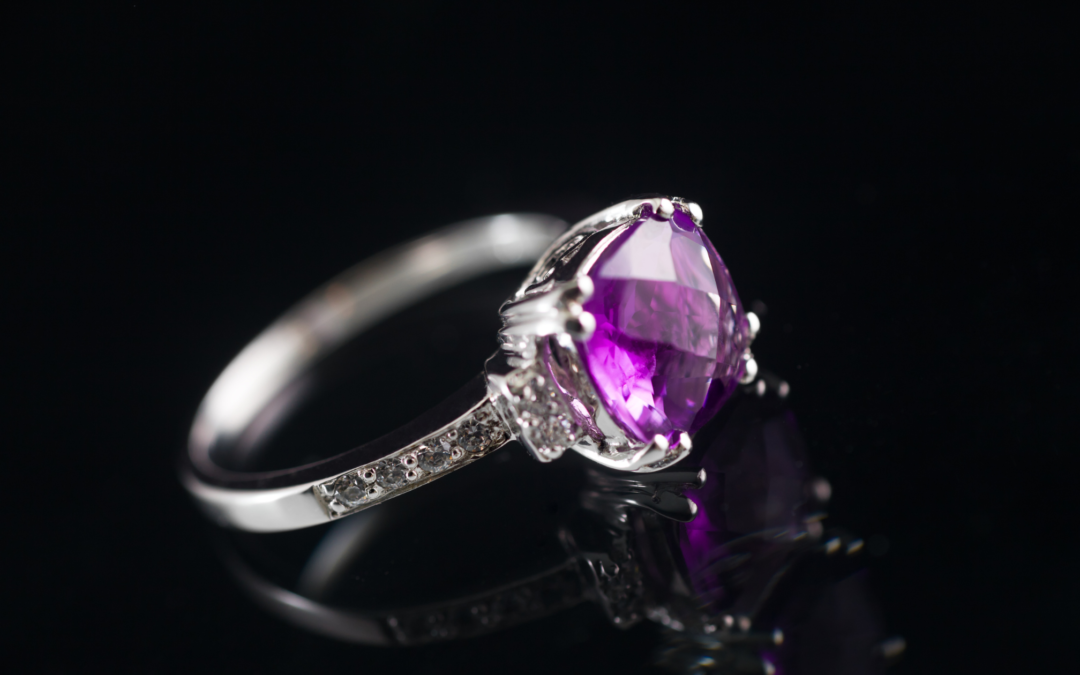At Victoria Marie Jewelers, we understand the allure of Amethyst. Its rich purple hue, steeped in history and metaphysical properties, can captivate anyone. But we also know that, as with any precious gemstone, there’s an unfortunate prevalence of counterfeits in the market. So, how can you, our esteemed customer, be certain you’re purchasing a real Amethyst? That’s exactly what this blog aims to clarify.
Understanding Amethyst
Originating from the Greek word ‘amethysts’, meaning ‘not intoxicated’, Amethyst has a long, fascinating history. Revered for centuries for its beauty and supposed sobering effects, it’s a variety of quartz that’s prized for its vibrant purple tones.
The physical and metaphysical properties of this gemstone, from its Mohs hardness of 7, making it a durable choice for jewelry, to its purported calming energy, make Amethyst highly sought after. It’s used in everything from bespoke jewelry to spiritual practices.
Why Fake Amethyst Exists
Given its popularity and market value, there’s a temptation for unscrupulous dealers to peddle fake or synthetic Amethyst. Synthetic gems are cheaper to produce, and to the untrained eye, can look much like the real thing. Some common substitutes include colored glass or other similar gemstones like colored Cubic Zirconia.
Spotting a Real Amethyst: Key Characteristics
To ensure you’re purchasing genuine Amethyst, look out for the following key characteristics:
- Color: Authentic Amethysts vary from light pinkish violet to deep purple. They often show ‘color zoning’, where the color intensity varies within the gem.
- Clarity: Natural Amethysts often contain inclusions and tiny imperfections inside the crystal.
- However, these are usually visible only under a jeweler’s loupe or microscope. On the other hand, synthetic versions are often flawlessly clear, which can be a red flag.
- Hardness: Genuine Amethysts are reasonably hard (7 on the Mohs scale), meaning they’re resistant to scratches from softer substances.
- Temperature: Real Amethysts are cool to the touch and can stay cool even when exposed to heat, unlike some synthetic alternatives.
Advanced Techniques to Identify Real Amethyst
While the above are useful preliminary checks, advanced identification techniques can help you be even more certain:
- Jeweler’s Loupe or Microscope: These tools can reveal inclusions or flaws indicative of a natural gemstone.
- Spectroscopic Analysis: This method involves a machine analyzing the light absorbed by the gemstone, offering a reliable way to identify real Amethyst.
- Professional Gemological Evaluation: A certified gemologist can provide an expert evaluation of a gemstone’s authenticity. We at Victoria Marie Jewelers offer appraisal services for such needs.
Where to Buy Genuine Amethyst
Always choose reputable gemstone dealers. Look for industry certifications and, if possible, seek dealers who provide certificates of authenticity for their gems, as we do at Victoria Marie Jewelers.
How to Care for Your Amethyst
Amethysts are durable, but they still need care. Keep them clean with mild soap and warm water. Avoid harsh chemicals, and store them separately from other jewelry to prevent scratches.
In conclusion, with these tips, you’ll be better equipped to identify real Amethyst. At Victoria Marie Jewelers, we’re committed to delivering quality, authenticity, and excellent customer service. If you have any questions, need further advice, or wish to browse our Amethyst collections, feel free to contact us or make an appointment to visit our store.

